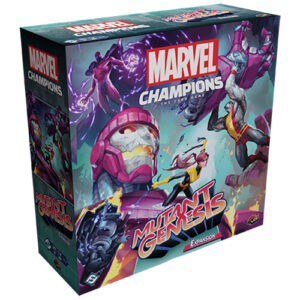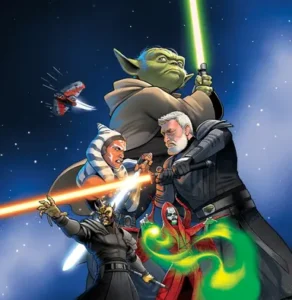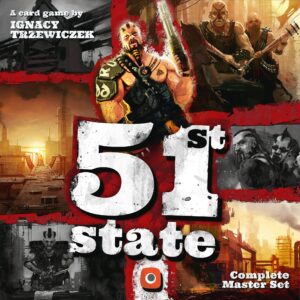
Rule Question
How does the “Night Travel” circumstance work in terms of the booster and initiative values? Specifically, which numbers do you subtract, and do you ever reduce below zero? There was also some confusion about whether the journey bonus or insufficient cards affect these calculations.
Rulesplainer
During the “Night Travel” circumstance, you subtract your initiative value (indicated by the lightning bolt icon) from your booster value (indicated by the plus icon). For example, if your booster is 5 and your initiative is 2, your final booster is 3 (not zero; only reduce to a minimum of zero if your initiative is equal to or greater than your booster). The subtraction takes place using the numbers printed on the cards—not from any bonuses. If the rules mention a journey bonus, it applies only if you have an unused card; otherwise, you do not get the bonus.
For unresolved time penalties (if you need to discard more cards than you have available), you take one damage for each penalty you cannot resolve. Also, these night travel reductions are not used in the final dragon encounter, since the reference card is not in play during that phase. The consensus in the discussion is that the rule’s wording could be clearer—think of it as “subtract initiative from booster (to a minimum of zero).” And, as clarified in the thread, your initiative value itself does not change—only your effective booster is reduced.
Rule Question
How does the “Poison” effect work in this game, specifically the wording “For each damage I take, take 1 damage next hand”?
Does the poison damage trigger immediately after drawing your next hand or during the penalties step?
Also, is poison damage counted by total damage taken or by the number of separate instances, and can cards downgraded due to poison be upgraded afterward?
Rulesplainer
Poison damage is triggered immediately after you draw your next hand, not at the end of the subsequent encounter.
The poison effect is counted by the number of separate instances you took damage, not the total amount of damage – for example, if you took 3 damage at one time and 3 from another source, you would suffer 2 poison damage next hand (one for each instance), not 6 (one for each damage taken).
The phrasing “for each time you take damage” is intended to signify “for every instance of taking damage,” and more recent clarifications and upcoming rulebooks are working to make this clearer.
Once you take poison damage after drawing your hand, the effect is resolved and the cards involved can be upgraded or downgraded as usual for the rest of the turn; the poison does not continue to impact those cards.
In summary, count how many distinct times you were dealt damage during the poisoned encounter; you will suffer that many poison damage right after drawing your next hand, then proceed as normal.
Rule Question
How does the “fuse” mechanic work in this game? Specifically, when fusing two cards of the same color, do you combine their booster or initiative values, and are there strategic reasons to fuse cards beyond just changing colors for element actions?
Rulesplainer
When you fuse two cards, you do not add their values together. Instead, you pick which card will be “active” on top—the other is placed underneath and its values are ignored. The only reason to fuse cards is so you can use the new fused card as a different color to trigger an ether action, not to boost the card’s values. For the Leader or Booster roles, the card’s background color doesn’t matter and there’s no benefit to fusing for those reasons. You might also use fusion to get around certain card effects like “Steep” or “Ranged,” as fused cards can help you avoid their negative consequences by not leaving an unused card available to target. Note, however, that fusing costs you two cards (which is effectively a loss of 1 time/resource). Always choose the best card of the two to be on top, as only its numbers and abilities count.
Rule Question
This thread asks multiple questions about resolving card interactions and choices in the game: Whether cards used only as an Ether move bonus must be discarded, if poison prevents upgrades in the following round, whether certain region colors are intentional, if failing to achieve the lowest enemy defeat tier results in losing, and how Ether move bonuses interact with steep terrain penalties.
Rulesplainer
1) If you use a card’s boost value as an Ether move bonus (not as part of your action set), you do not have to discard that card during cleanup; only discard the actual action set used.
2) If a card is downgraded due to poison, you can still upgrade it with experience in the next upgrade phase—poison doesn’t prevent upgrades.
3) The use of red coloring for both the 2nd and 3rd journeys in the third region is intentional to fit the “Burning Basin” theme.
4) If you fail to achieve the lowest tier (Tier 1) against the final enemy, you lose the game immediately—this is the intended rule, even if the rulebook omits it.
5) When determining movement on “steep” colored locations, Ether move bonuses are added and can fully negate the steep penalty (e.g., a blue move with a blue bonus vs. a blue steep location results in a net effect of zero).
All answers are confirmed or provided by the game designer.
Rule Question
Is there a symbol or way to tell the difference between blue and grey-bordered cards, since the colors are difficult to distinguish?
Rulesplainer
There is currently no special icon or symbol that indicates the color of the border on blue or grey cards; players must rely on the card’s background color. Several users have expressed difficulty in distinguishing these colors, especially without both types for direct comparison. The designer acknowledges this issue and is considering improvements for future editions, such as adding an icon or adjusting colors. Suggestions in the thread include making the grey a lighter shade, or introducing unique textures for each color to assist colorblind or visually impaired players. The community generally agrees that relying solely on color can be problematic and good UI/UX would include additional distinguishing marks. For now, players will need to continue using the current color cues and possibly house-rule their own solutions (like sorting or marking cards safely). The issue is known, and improvements may come, but for now, no symbol exists for this purpose.






